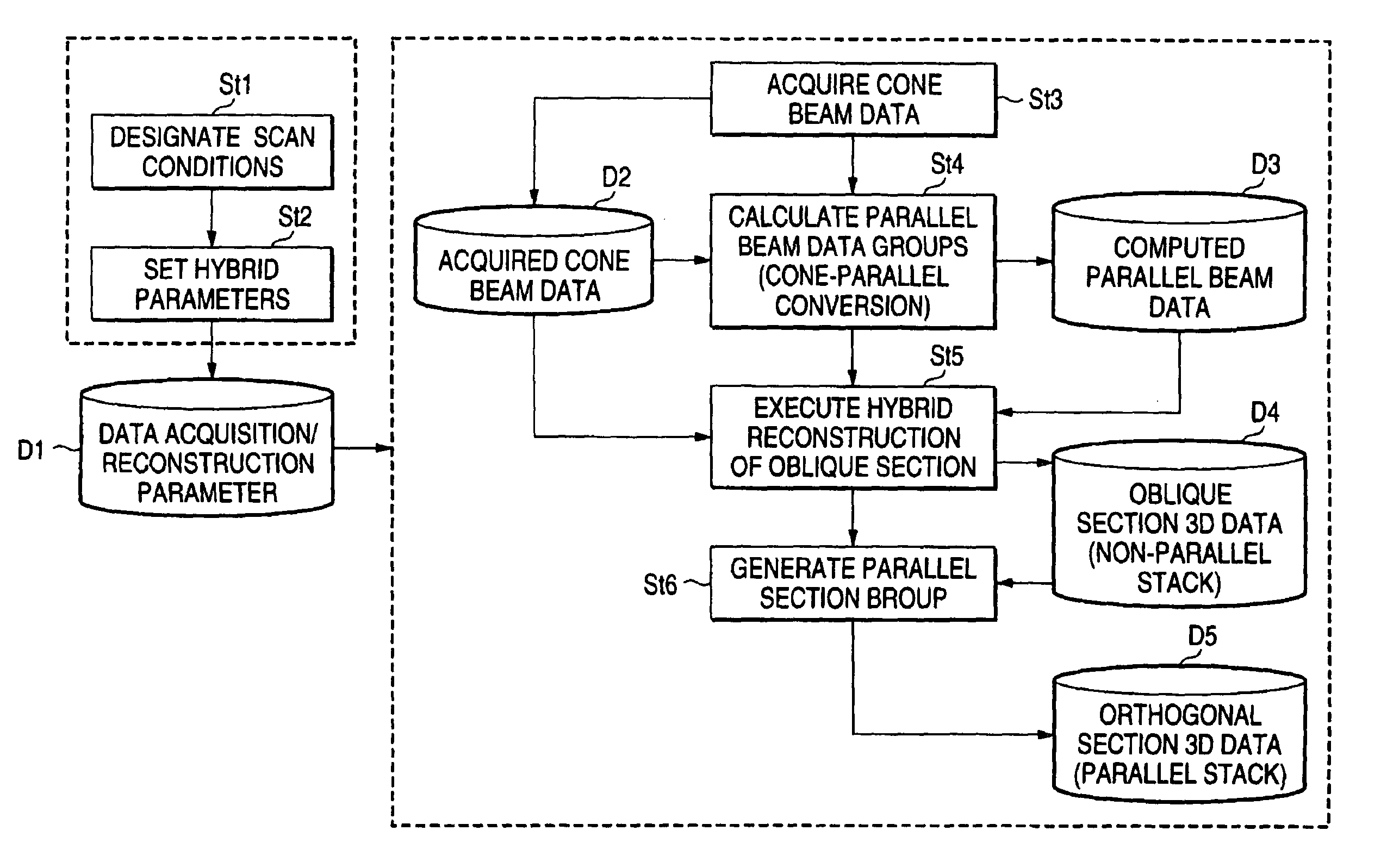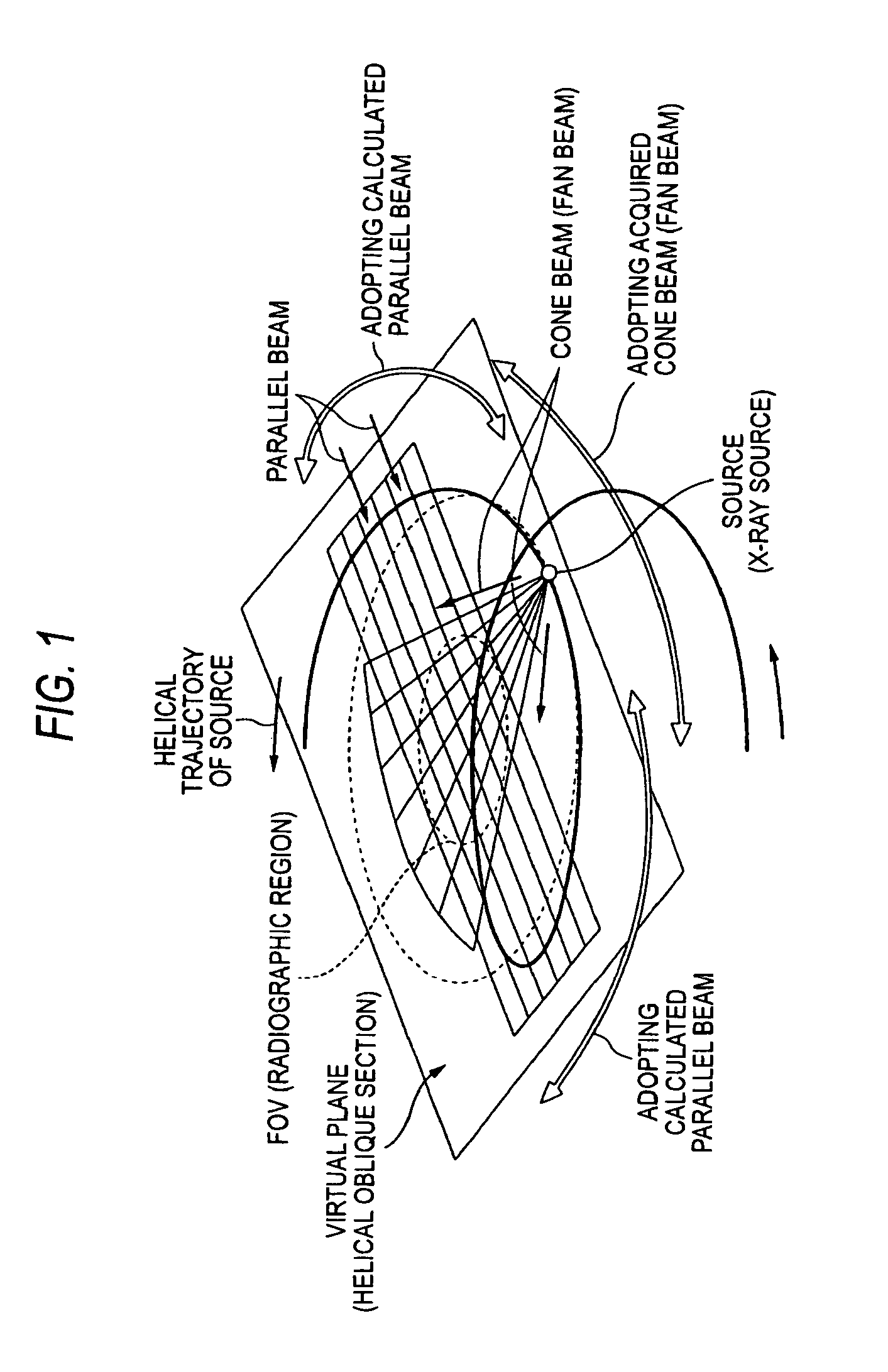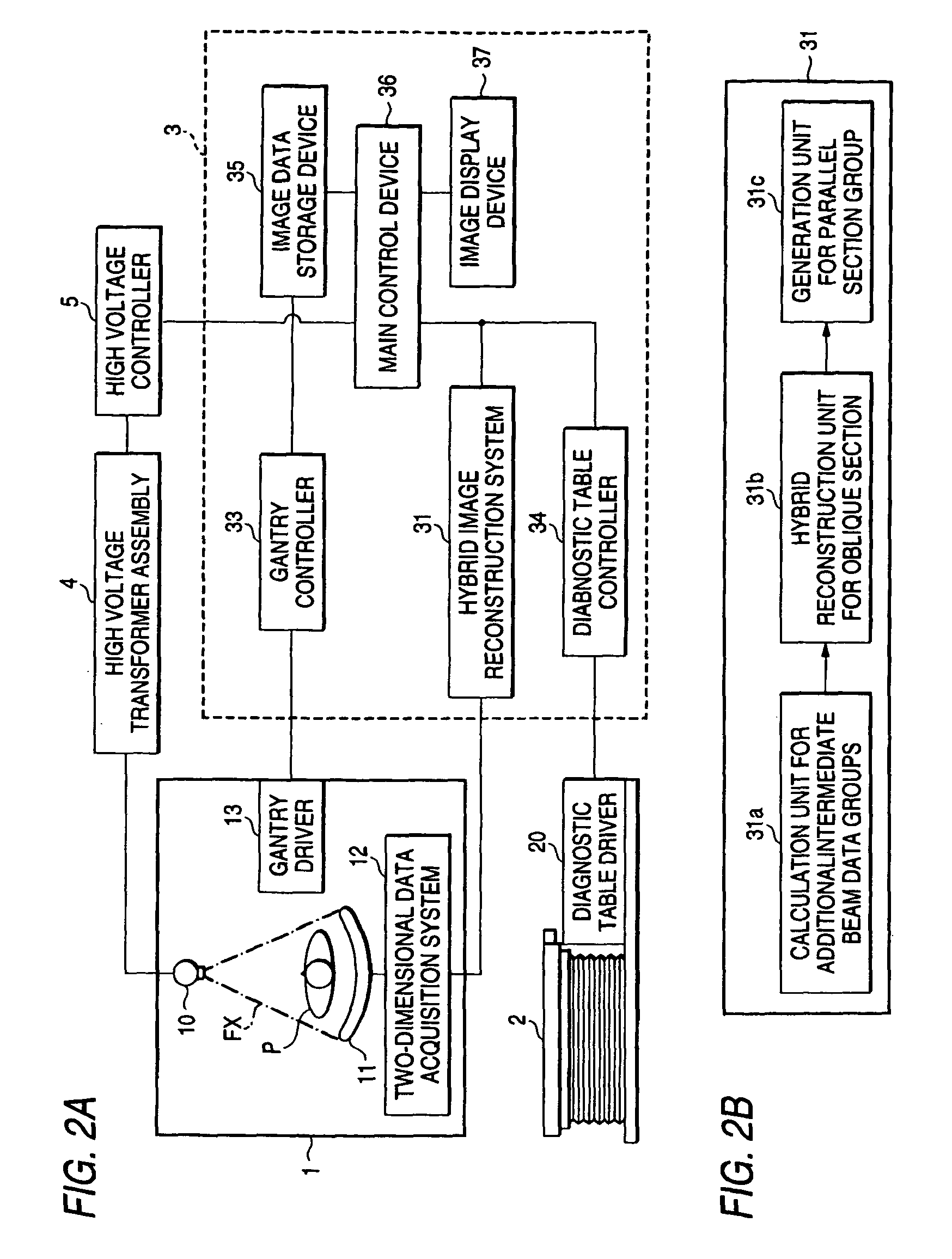Computed tomography apparatus and program
a tomography and computed tomography technology, applied in tomography, instruments, nuclear engineering, etc., can solve the problems of large computation, insatiable use of medical image diagnostic equipment, and inability to apply actual discrete data degradation, etc., to achieve high accuracy, high speed, and high approximation accuracy
- Summary
- Abstract
- Description
- Claims
- Application Information
AI Technical Summary
Benefits of technology
Problems solved by technology
Method used
Image
Examples
first embodiment
[First Embodiment]
[0120]I. Necessary Conditions
[0121]In order to complete beams necessary for image creation by employing acquired cone beam data and converted parallel beam data, the angle κ of a virtual oblique section and the angle κ′ of the direction of the line of sight for parallel beams must be carefully set. The foregoing example corresponds to the case of setting κ=κ′ at 9.04 degrees. Conditions to be satisfied are as arranged below.
[0122](1) A certain wide range is covered as the acquired cone beam data hold a suitable approximation precision even outside the vicinity of that direction (θ=0) of a source in which an oblique section has been set.
[0123](2) A certain wide range is covered as calculated converted parallel beams hold a suitable approximation precision even in directions other than the direction of θ=90 degrees.
[0124](3) When both cone beams and the parallel beams are combined, all beams required for creating the image of the oblique section can be obtained.
[0125...
second embodiment
[Second Embodiment]
[0160]Data acquisition, CP conversion processing, the calculations of weighting functions, etc. are the same as in the first embodiment. In the second embodiment, the last image reconstruction portion is different. After fan beam data are multiplied by the weights wf indicated in the first embodiment, ordinary reconstruction is executed using the fan beams. On the other hand, parallel beams after CP conversion are multiplied by the weighting function wp, and parallel beam reconstruction is executed. Regarding directions in which quite no data exist, back projection calculations may well be omitted. The reconstructions concerning the two sorts of data are executed by different calculating algorithms, but both the algorithms afford equivalent calculations. Accordingly, a correct image can be obtained even when intermediate images, in a sense, are created for the respective sorts of data and are thereafter added. The flow of the processing in this embodiment is as sh...
third embodiment
[Third Embodiment]
[0163]As commented at the last of the outline preceding the first embodiment, a solution with better approximation is obtained when the tilt angle of parallel beams is changed depending upon the direction of the line of sight.
[0164]Although the single tilt angle is representatively used in the first and second embodiments, a method employing two angles will be described here. More specifically, an example of κ=10.5 degrees and κ′=9.5 degrees and an example of κ=10.5 degrees and κ2′=8 degrees will be explained. Parallel beams calculated in the pair of κ=10.5 degrees and κ′=9.5 degrees correspond to the first embodiment, and data calculated in the pair of κ=10.5 degrees and κ2′=8 degrees form an essential element added thereto. In other words, the method consists in the idea that the latter data are used to compensate for a region which is difficult to be covered with the former data, or a region in which errors are large.
[0165]FIGS. 17A and 17B show the generatable ...
PUM
 Login to View More
Login to View More Abstract
Description
Claims
Application Information
 Login to View More
Login to View More - R&D
- Intellectual Property
- Life Sciences
- Materials
- Tech Scout
- Unparalleled Data Quality
- Higher Quality Content
- 60% Fewer Hallucinations
Browse by: Latest US Patents, China's latest patents, Technical Efficacy Thesaurus, Application Domain, Technology Topic, Popular Technical Reports.
© 2025 PatSnap. All rights reserved.Legal|Privacy policy|Modern Slavery Act Transparency Statement|Sitemap|About US| Contact US: help@patsnap.com



